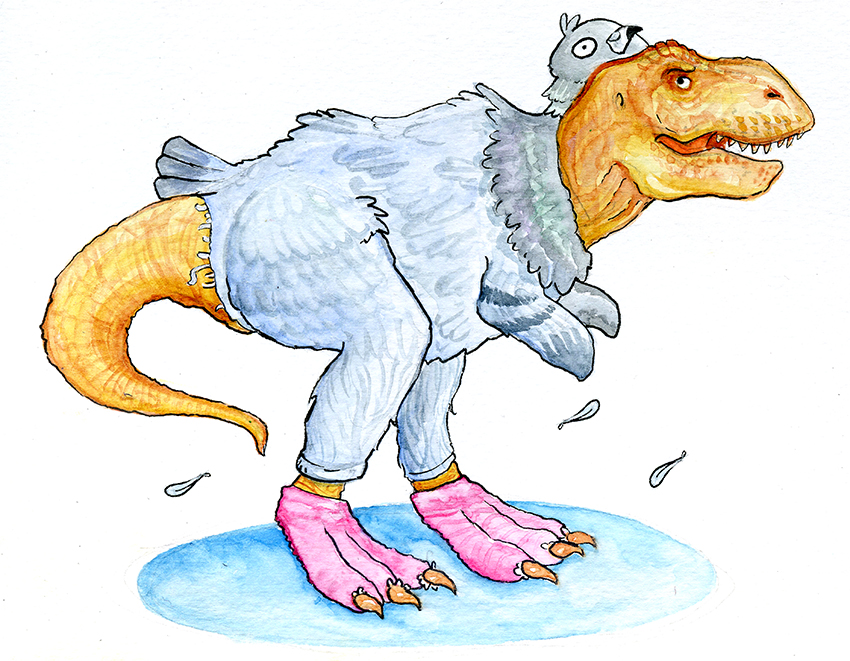The T-Rex is known for its large teeth, giant size and fierce roar, but new research suggests that the tyrant lizard king may also have made cries no more frightful than a pigeon’s coo.
According to a study recently published in the journal Evolution, dinosaurs may have produced sounds similar to the bellow of an alligator or the coo of a pigeon, in addition to their roars. To find this information, co-author Julia Clarke, a professor at the Jackson School of Geosciences, and a team of scientists from UT and other universities studied the calls of the closest living relatives of dinosaurs, birds and crocodilians.
The researchers observed that many of the larger birds, along with alligators and crocodiles, are closed-mouth vocalizers, meaning they emit sounds through the skin on their necks instead of through their mouths. Clarke said that since dinosaurs were much larger than today’s living birds, the probability of dinosaurs exhibiting the closed-mouth calling is high.
Chad Eliason, a postdoctoral researcher at UT’s Jackson School of Geosciences and the study’s co-author, said that to produce a sound, a bird forces air into its esophagus instead of releasing it through an open mouth. The area around the neck of the bird filters out higher frequency sounds to release a deeper, more pure tone. These sounds can range from soft coos like a dove to harsher noises like those of an alligator or crocodile.
“Just think about blowing up a balloon,” Eliason said. “A small balloon is a lot trickier to blow up than a large balloon, so I think that’s kind of the biomechanical argument of why we might see this only occurring in large bodied things and potentially in large extinct dinosaurs as well.”
To understand how and why closed-mouth vocalization evolved, the scientists performed statistical analyses on the distribution of the calls among bird and reptile groups. They came to realize that the behavior evolved sixteen separate times in avian species and was most predominant in large-bodied lineages.
In the animal kingdom, closed-mouth bellows are social interactions or a sexual display. Eliason said that baby ostriches produce begging sounds with an open mouth to call for food, but an adult male will produce a booming sound with a closed mouth to attract a mate. He said that dinosaurs’ closed-mouth vocalizations were more than likely limited to sexual displays and would have therefore used open-mouth calls as well.
“I would say that it would be very possible, potentially, that they used both behaviors in different contexts,” Eliason said. “In other context, they still could have produced these open mouth sounds.”















